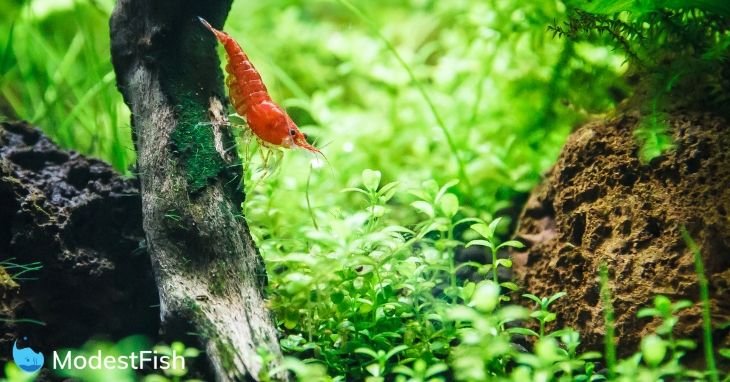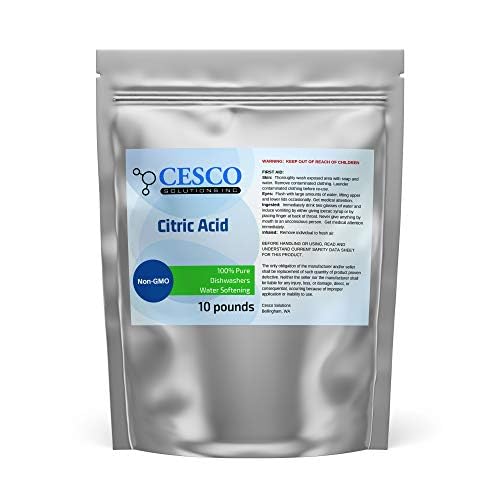It doesn’t require a scientist to point out that aquatic plants need carbon dioxide to eat, grow and reproduce. If you have plants in your aquarium, you’ve probably thought about how CO2 reaches them.
Well, I’m not going to lie. At some point, I thought they would get it from nature the way they do outdoors.
However, I discovered the hard way that since the natural cycle of rainfall and evaporation doesn’t exist in synthetic aquariums, there’s nothing to stir CO2 into your plants’ water. And since even tablet fertilizers don’t introduce CO2 into this closed system, you have to put it in yourself.
That’s when CO2-producing agents and CO2 reactors come into play. For your plants to thrive, you have to imitate the natural conditions they’d grow in. So, here are the best CO2 reactors that helped me prepare a healthy habitat for my aquatic plants.
TLDR – Best Aquarium CO2 Reactor
The best CO2 reactor is the ZRDR because of the more stable base for the canister.

Last update on 2024-04-25 / Commissions Earned / Images from Amazon Product Advertising API
How To Choose Your CO2 Reactor

From experience, it’s not only enough to inject CO2 into your aquarium. There must be a system that suspends the CO2 in the water, refines the bubbles to be easily dissolved, and regulates the pressure.
So before you pull the trigger, ask yourself what the kit includes. For example, a CO2 system that consists of a generator, diffuser, and regulator all in one kit, is more practical and cost-efficient.
Some of the features to look for are:
- CO2 bottle: You should choose the size of the canister according to the size of your tank. A bigger bottle will last you more and cost you less when it’s time to refill.
- Regulator: Changes the pressure inside the bottle allowing the CO2 to be released into the water.
- Diffuser: Important to reduce the size of the bubbles. Smaller bubbles have more surface area, allowing for more CO2 to dissolve in the water and reach the plants.
- Bubble counter: Counts the number of CO2 bubbles entering your aquarium, allowing you to monitor and control the rate of CO2 as per what your plants need.
- Pressure gauge: Allows you to observe how much pressure is in the tank.
- Solenoid valve: When coupled with a timer, it lets you stop the CO2 release in the water when the time of photosynthesizing passes.
As you can see, the more functions, the better your aquatic system will be, and the less money you’ll have to pay for extras.
The second factor you should check is whether your reactor comes with chemicals needed to generate CO2. Some units allow you only to use CO2 cartridges, while others work just fine with chemicals like citric acid and baking soda. Of course, the latter is more practical and cost-efficient. All in all, check whether you’ll have to purchase these chemicals separately.
The quality of the build is another deciding factor. The housing is usually made of plastic, glass, or stainless steel. Plastic and glass are more affordable and come in more appealing designs; however, they’re weaker than stainless steel.
You don’t want to end up with a unit that breaks easily if you have little aquarists in the house or you’re just clumsy. A stainless steel housing is always a better choice if you want a unit that’ll last you a lifetime and protect you from potential hazards.
Finally, make sure the unit comes with an automatic pressure relief valve. CO2 reactors are closed systems that can explode if the pressure increases. These valves are designed to open automatically at a certain pressure level to discharge fluid if too much gas builds up.
Best CO2 Reactors Compared & Reviewed
Now that you’ve got an idea about what makes a CO2 reactor worth your bucks, let’s jump into the reviews.
1. ZRDR CO2 Generator System Carbon Dioxide (Top Pick)
If you’re on the market for a full-featured CO2 system without emptying your pockets, the ZRDR CO2 Generator System fits the bill.
Despite its affordable price, everything about this model speaks of sturdiness and functionality. Featuring stainless steel housing, the unit feels sturdier and safer than plastic DIY units and lower-quality counterparts.
It saves cash in other ways as well. Straight out of the package, it includes all the equipment needed, starting from the bubble counter and pressure valve and ending with the mounting tools and instructions manual. In short, you won’t need to purchase any extras.
Moreover, instead of special CO2 cartridges, you can work the system with grocery store baking soda and citric acid. Although the baking soda and citric acid must be purchased separately, they’re still much cheaper than replacing the overpriced CO2 tanks and cartilages.
The whole kit speaks of safety. The pressure valve is automatic, meaning that it shuts down the system by itself if the pressure exceeds 30Kg. The waterproof solenoid valve is another nice touch. By simple steps, you can connect it to a timer so that it turns the system on and off while you’re at work or on vacation, avoiding any hazards while you’re out.
And if you’re worried about the bottle tipping over, the added base makes the bottle more stable so it won’t break or shoot off around the tank.
One problem with CO2 reactors is that some produce large bubbles that travel faster to the surface, not giving the CO2 enough time to dissolve in the water. With the help of the included atomizer and bubble counter, this unit allows you to fine-tune the system to produce tiny bubbles with the amount you desire.

Last update on 2024-04-25 / Commissions Earned / Images from Amazon Product Advertising API
2. WuyouChy CO2 Generator System
Another nice investment for your planted tank is the WuyouChy CO2 Generator system. The kit features all the accessories you need to modulate your tank plants’ environment immediately.
Apart from the stainless steel canister that boasts thick walls and a build that can take a beating, the regulator, valve, and bubble counter are all made of high-quality materials.
The pressure reducing valve regulates the CO2 flow, and the automatic pressure valve is there to save the day if the pressure gets out of control. Like the previous model, it features an acrylic diffuser to refine the CO2 bubbles, giving the CO2 time to dissolve and your plants more air to breathe.
The system is really efficient on CO2. There is no need to shop for CO2 cartridges since it works with citric acid and baking soda, though you’ll have to purchase them separately. The gauge on the reactor will tell you how much pressure there is in the tank and alert you when it’s time to refill.
I especially like the solenoid valve, which allows you to run the kit on a timer and adjust it according to the photosynthesis periods of plants.
Overall, the kit is more or less pretty similar to my top choice, with the exception that it doesn’t include an added base, which isn’t the best decision from the company given that the canister is a bit wobbly. Trust me, you don’t want the bottle to tip over and break the tank or the regulator, so you’ll have to purchase a stand separately.

Last update on 2024-04-25 / Commissions Earned / Images from Amazon Product Advertising API
3. Cesco Solutions 100% Pure Citric Acid
The Cesco Solutions 100% Pure Citric Acid is an inexpensive citric acid powder that you can use to manually diffuse CO2 into your planted tank. For plant-loving aquarists who prefer DIY methods, this is one of the best and most efficient citric acid packages that I personally like to use.
My favorite thing about this product is that it comes in a convenient resealable bag that allows you to pour the content moderately, close it, and stack the rest.
You can add this citric acid as a reactant in a CO2 reactor like the previous models or just use it to build your own DIY CO2 reactor.

Last update on 2024-04-25 / Commissions Earned / Images from Amazon Product Advertising API
4. ARM & HAMMER Baking Soda
To produce carbon dioxide, you’ll have to use both citric acid and baking soda for the chemical reaction to occur. I personally use ARM & HAMMER Baking Soda. However, it’s worth noting that you don’t have to go expensive to make the reaction work. Any ordinary grocery store baking soda will also work.
No products found.
Which One Is the Best?
The best CO2 reactor is the ZRDR because of the more stable base for the canister. If you have a base that you can use, the WuyouChy CO2 Generator System would be a nice and rewarding choice as well.
All in all, it doesn’t take much work or resources to build a healthy system for your planted aquascape. A system with high-quality materials, easy set-up, and enough safety measures are all that you need, and that’s what both models offer.

Last update on 2024-04-25 / Commissions Earned / Images from Amazon Product Advertising API

Why is the dual gauge better than the single pressure gauge especially as on Amazon it is $A60 more? Cannot see the benefit of the expensive extra gauge. Have I missed something?
Hi Chris, great question and one I should definitely go into more depth in the article. Here’s why you want a dual gauge:
A dual gauge helps prevent what is known as a “end of tank dump”. As you use up CO2, pressure in your storage tank drops, a two stage regulator will prevent the output of pressure increasing as a result. If this is not prevented, you could end up dumping way too much CO2 into your tank and this could kill all your fish.
A two-stage regulator on a CO2 reactor greatly reduces this from happening. You’re able to set your first regulator to account for the pressure drop. For example sake, 60 PSI. As pressure drops, the output will increase, but only a fraction. Maybe up to 100psi at worst. This means your second regulator will see almost no change and not cause the “end of tank dump”.
I hope this helps you understand. To put all that as simply as possible, dual gauge is more expensive but you have better protection against pressure changes.